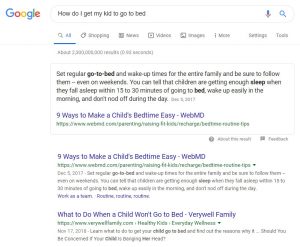by Jack Loechner, Staff Writer @mp_research, August 31, 2016
According to a new study from Fractl, written by Lillian Podlog, after analyzing 26,988 PR eMail pitches sent over a 20-month period to determine what makes a pitch successful (whether or not an editor responded to the pitch,) some key insights are: If editors want to “show their readers something” ‘size,’ ‘ideal,’ ‘image,’ and ‘chart’ were among the top 15 highest-performing words in subject lines; To “avoid referencing dynamic content,” ‘Interactive’ and ‘video’ were two of the lowest-performing words in subject lines.
And, an interview with 1,300 publishers found that 84% of writers and editors agreed that PR pitches were at least “slightly valuable” to their jobs, and 40% of writers get pitched more than 20 times per day.
Nearly two-thirds of publishers determine whether or not to open an email based on the subject line, says the report. In subject lines, every word counts. Excluding articles, prepositions, and other helping words, the study considered the 300 most common words in subject lines. All the terms appeared in at least 127 subject lines (out of 300), and they held an average success rate of 12%. The following words yielded success rates much higher than average.
Highest Performing Subject Line Words | |
Keyword | Success Percentage (Appeared in subject line) |
Content | 30.6% |
Size | 27.6 |
Marketing | 24.8 |
Know | 23.5 |
Ideal | 23.2 |
U.K. | 22.6 |
Air | 19.1 |
Image | 18.9 |
House | 18.1 |
Travelers | 17.8 |
Generations | 17.8 |
Chart | 17.8 |
Body | 17.5 |
Show | 17.4 |
Changed | 17.4 |
Source: Fractl, August 2016 | |
Words such as “know,” “changed,” and “show” were successful since they immediately highlighted what was interesting about the content. The research showed that U.K. writers appreciated when the content related to their locale. Tailoring the pitch to a writer’s state or city can help catch their attention.
Using humor can be risky, says the report, but some writers are receptive to quips in the subject line. The survey found that 60% of people find humorous emails acceptable, and this trend only increases with the recipient’s age. If a writer appears more conservative, a bawdy subject line is probably a no-no.
While writers might respond to humor and geographic ego bait, these tactics are secondary to a targeted pitch. More than 60% of writers agreed that great subject lines are tailored to a writer’s beat, but fewer than 20% agreed that humor is essential.
Great Subject Lines Are: (According To The Study) | |
| Approximate % Responders Agreeing |
Tailored to the writer’s beat | > 60% |
Specific | > 50 |
Descriptive | > 50 |
Brief | 40 |
Creative | > 30 |
In the style of the publication | > 30 |
Provocative | < 20 |
Catchy | > 15 |
Personalized | > 15 |
Humorous | > 15 |
ClickBait | < 02 |
Source: Fractl, August 2016 | |
While 35% of the 26,900 subject lines studied contained numbers or percentages, the study showed that including numbers in the subject line didn’t have any bearing on whether or not subject lines were successful. And, the term “exclusive”had about the same success rate (11.94%) as subject lines without it (12%).
The research discovered that 75% of publishers prefer subject lines under 10 words, but the average word count for the subject lines in the study was 10.1 with little variation (a standard deviation of 2.0 words) and no statistical difference between successful and unsuccessful subject lines.
The study looked at the words that were frequently used in at least 500 subject lines, but had the lowest success rates, finding that:
Top Five Overused Words In Subject Lines | |
Keyword | Success Percentage (Subject Lines With Keyword) |
Interactive | 9.3% |
State | 9.9 |
U.S. | 10.0 |
Data | 10.3 |
Video | 10.5 |
Source: Fractl, August 2016 | |
Analyzing the first 100 characters of each email, the pitches began with a connection to the writer either based on one of their articles or their personal bio. The research determined that “positivity” was key.
Top 10 Highest Performing Introduction Words | |
Keyword | Success Percentage |
Happy | 22.2% |
Hope | 20.3 |
Piece | 18.2 |
Tips | 17.5 |
Data | 17.5 |
Study | 17.2 |
Loved | 17.2 |
Week | 17.1 |
16.8 | |
Great | 16.1 |
Source: Fractl, August 2016 | |
According to the study, in pitch introductions writers don’t mind politeness (“I hope you had a great weekend,” “I hope you’re feeling better,” etc.). As a PR professional, your goal is to develop mutually beneficial relationships, so it’s okay to spend a sentence on platitudes before connecting with a writer’s work or personal background. But focusing on negatives such as “hard to believe” or “shocked” is ineffective.
Concluding, the report says that TheBottom Line is that subject lines are the moment to strut your stuff in a short amount of space. Don’t forget that pitch introductions are where you either reel a writer in or lose them.
- Be positive
- Be polite
- Be relevant.
- Highlight something new.
- Make a (geographic) connection.
- Get some laughs.
To access the complete report from FRACTL, please visit here.
MediaPost.com: Search Marketing Daily
(43)






